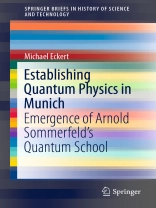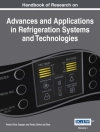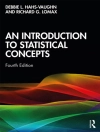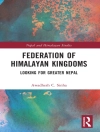This book traces the history of Arnold Sommerfeld’s famous “nursery of theoretical physics” at the University of Munich and demonstrates the centrality of developing personal and institutional networks for the emergence of quantum theory. Sommerfeld, originally a mathematician with little interest in theoretical physics, was a somewhat unlikely choice for a chair of theoretical physics when he was appointed in 1906. However, he quickly reoriented his research focus towards physics, forstering a keen interest in experimental research. Possibly even more important for the development of quantum theory in the coming years was his exceptional talent as a charismatic teacher and prolific networker, which turned Munich into a central node in the fast-growing network of quantum physicists in the 1920s. It is no coincidence that the two most talented “child prodigies” of 1920s quantum physics, Wolfgang Pauli and Werner Heisenberg, were his students, nor that by the end of the decade about a dozen of Sommerfeld’s former disciples held chairs in theoretical physics. The book is directed at historians of science and physics, as well as all those interested in the history of science diplomacy and networking.
The book is part of a series of publications on the early network of quantum physics. These works emerged from an expansive study on the quantum revolution as a major transformation of physical knowledge undertaken by the Max Planck Institute for the History of Science and the Fritz Haber Institute (2006–2012). For more on this project, see the dedicated Feature Story, The Networks of Early Quantum Theory, at the Max Planck Institute for the History of Science, https://www.mpiwg-berlin.mpg.de/feature-story/networks-early-quantum-theory
Tabela de Conteúdo
Chapter 1. Introduction.- Chapter 2. Boltzmann’s Legacy.- Chapter 3. Munich Beginnings.- Chapter 4. X-rays and Quanta, 1911–1913.- Chapter 5. Extending Bohr’s Model, 1914–1919.- Chapter 6. Synergy and Competition in the Quantum Network, 1919–1925.- Chapter 7. Wave Mechanics—A Pet Subject of the Sommerfeld School, 1926–1928.- Appendix.
Sobre o autor
Michael Eckert is a German physicist and science historian at the Deutsches Museum in Munich. He studied physics at the Technical University of Munich, graduating in 1976, and was awarded a doctorate in theoretical physics (models for the visual processes of invertebrates) at the University of Bayreuth in 1979. From 1981 to 1988, he worked at the Deutsches Museum, and from 1989 to 1995 was a lecturer at the Bayerischer Schulbuchverlag. From 1995 to 2000, he was a research associate at the Ludwig-Maximilians-Universität in Munich and since 2001 has been working at the Research Institute for the History of Technology and Science at the Deutsches Museum. Eckert published a biography of Arnold Sommerfeld (and organized an exhibition about him at the Deutsches Museum), wrote a book about the Sommerfeld School of Atomic Physics and about the history of fluid mechanics, especially the school of Ludwig Prandtl, and dealt, among other things, with the history of solid-state physics and nuclear energy policy in Germany.












